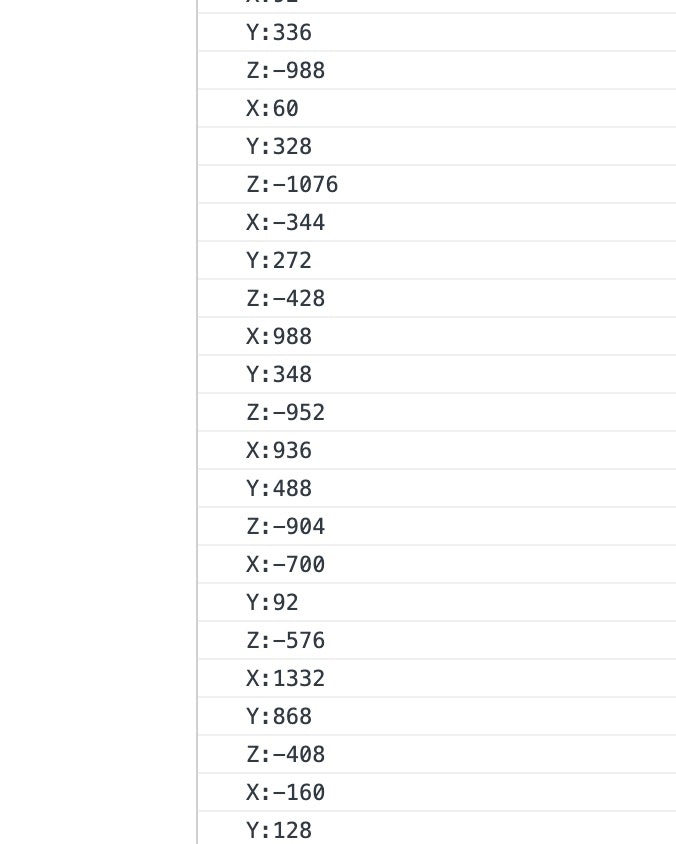この記事は、以下の内容の続きです。
●Web Serial API を使って micro:bit からセンサーの値を読み取る(途中段階) - Qiita
https://qiita.com/youtoy/items/9606c58369796a65f8f5
ちなみに、Web Serial API 関連の話は、上記の記事とは別に以下の記事も書いています。
- Web Serial API を最短の手順で試したくてやったこと(micro:bit を利用) - Qiita
- Web Serial API を使った micro:bit への値の書き込み - Qiita
冒頭に記載した記事の内容では、micro:bit から値を読み取れてはいたものの、意図したとおりには読み取れていない問題があったため、それを解決するための対応をしたのがこの記事の内容です。
また、それと合わせて読み取った値のグラフ化も行ってみました。
最終的な完成形は以下となります。
Web Serial API を使った、シリアル通信による値の読み取りができた!
— you (@youtoy) February 9, 2021
micro:bit の加速度センサーの値(XYZ)をブラウザで直接読み取って、3種類の値をそれぞれ別の色に対応づけてリアルタイムにグラフ化。
#IoTLT pic.twitter.com/TEjDV7HTCU
前の記事で発生していた問題を解決する
Webサイト側の内容修正
前の記事で発生していた問題に関し、以下のサイトの情報を見つつ対応しました。
●Read from and write to a serial port
https://web.dev/serial/
以下に、改善後のソースコードを掲載します。
前の記事の内容と差があるところにコメントを入れました。
<!DOCTYPE html>
<html>
<head>
<meta charset="utf-8" />
<meta name="viewport" content="width=device-width, initial-scale=1" />
<title>Web Serial(Read)</title>
</head>
<body>
<h1>Web Serial(Read)</h1>
<button onclick="onStartButtonClick()">接続</button>
<script>
// ▼追加した部分1
class LineBreakTransformer {
constructor() {
this.chunks = "";
}
transform(chunk, controller) {
this.chunks += chunk;
const lines = this.chunks.split("\r\n");
this.chunks = lines.pop();
lines.forEach((line) => controller.enqueue(line));
}
flush(controller) {
controller.enqueue(this.chunks);
}
}
async function onStartButtonClick() {
try {
const port = await navigator.serial.requestPort();
await port.open({ baudRate: 115200 });
while (port.readable) {
// ▼追加した部分2
const textDecoder = new TextDecoderStream();
const readableStreamClosed = port.readable.pipeTo(textDecoder.writable);
const reader = textDecoder.readable
.pipeThrough(new TransformStream(new LineBreakTransformer()))
.getReader();
try {
while (true) {
const { value, done } = await reader.read();
if (done) {
console.log("Canceled");
break;
}
// ▼ここでデコードの処理をしていたのを削除
console.log(value);
}
} catch (error) {
console.log("Error: Read");
console.log(error);
} finally {
reader.releaseLock();
}
}
} catch (error) {
console.log("Error: Open");
console.log(error);
}
}
</script>
</body>
</html>
micro:bit のプログラム(少し手を加えてみる)
micro:bit のプログラムは前回と同じものでも良かったのですが、加速度センサーの値を XYZ の 3種類全て書きだすように変えてみました。
プログラムを実行してみる
シリアル通信で読み出された値は、コンソールに以下のように出力されました。
micro:bit側で 1行ずつ書きだした内容が、読み取り側でも 1行ずつ表示されるようになりました。
センサーの値をグラフ化
以前、以下の記事を書いた際に使った Chart.js とプラグインを使い、加速度センサーの値をグラフ化してみます。
●【JavaScript 2020】 MQTT で受信したデータを Smoothie Charts(smoothie.js)以外でリアルタイムにグラフ化: Chart.js とプラグインを利用 - Qiita
https://qiita.com/youtoy/items/252f255c9d794bf3d964
ソースコードと実行結果
グラフ化のための処理を加えたソースコードは以下のとおりです。
<!DOCTYPE html>
<html>
<head>
<meta charset="utf-8" />
<meta name="viewport" content="width=device-width, initial-scale=1" />
<title>Web Serial(グラフ化)</title>
<script src="https://cdnjs.cloudflare.com/ajax/libs/moment.js/2.29.1/moment-with-locales.min.js"></script>
<script src="https://cdn.jsdelivr.net/npm/chart.js@2.8.0"></script>
<script src="https://cdn.jsdelivr.net/npm/chartjs-plugin-streaming@1.8.0/dist/chartjs-plugin-streaming.min.js"></script>
</head>
<body>
<h1>Web Serial(グラフ化)</h1>
<button onclick="onStartButtonClick()">接続</button>
<br>
<canvas id="myChart"></canvas>
<script>
class LineBreakTransformer {
constructor() {
this.chunks = "";
}
transform(chunk, controller) {
this.chunks += chunk;
const lines = this.chunks.split("\r\n");
this.chunks = lines.pop();
lines.forEach((line) => controller.enqueue(line));
}
flush(controller) {
controller.enqueue(this.chunks);
}
}
const ctx = document.getElementById("myChart").getContext("2d");
let chart = new Chart(ctx, {
type: "line",
data: {
datasets: [
{
label: 'X',
borderColor: 'rgb(200, 50, 50)',
backgroundColor: 'rgba(200, 50, 50, 0.2)',
data: [],
},
{
label: 'Y',
borderColor: 'rgb(50, 50, 200)',
backgroundColor: 'rgba(50, 50, 200, 0.2)',
data: [],
},
{
label: 'Z',
borderColor: 'rgb(50, 200, 50)',
backgroundColor: 'rgba(50, 200, 50, 0.2)',
data: [],
},
],
},
options: {
scales: {
xAxes: [
{
type: "realtime",
realtime: {
delay: 500,
},
},
],
},
},
});
async function onStartButtonClick() {
try {
const port = await navigator.serial.requestPort();
await port.open({ baudRate: 115200 });
while (port.readable) {
const textDecoder = new TextDecoderStream();
const readableStreamClosed = port.readable.pipeTo(textDecoder.writable);
const reader = textDecoder.readable
.pipeThrough(new TransformStream(new LineBreakTransformer()))
.getReader();
try {
while (true) {
const { value, done } = await reader.read();
if (done) {
console.log("Canceled");
break;
}
console.log(value);
if(value.slice(0,1)==="X") {
chart.data.datasets[0].data.push({
x: Date.now(),
y: value.slice(2),
});
} else if(value.slice(0,1)==="Y") {
chart.data.datasets[1].data.push({
x: Date.now(),
y: value.slice(2),
});
} else if(value.slice(0,1)==="Z") {
chart.data.datasets[2].data.push({
x: Date.now(),
y: value.slice(2),
});
}
chart.update({
preservation: true,
});
}
} catch (error) {
console.log("Error: Read");
console.log(error);
} finally {
reader.releaseLock();
}
}
} catch (error) {
console.log("Error: Open");
console.log(error);
}
}
</script>
</body>
</html>
このグラフ化の処理を加えたものを実行すると、冒頭に掲載した動画のようなグラフ化が行えます。
このように、Web Serial API を使って micro:bit からセンサーの値を読み取り、それを Webサイト上でリアルタイムにグラフ化することができました。
追記
ソースコードなどは以下の GitHub にも置きました。
https://github.com/yo-to/WebSeriaAPI/tree/main/examples/02_read_microbit_and_graph_drawing

